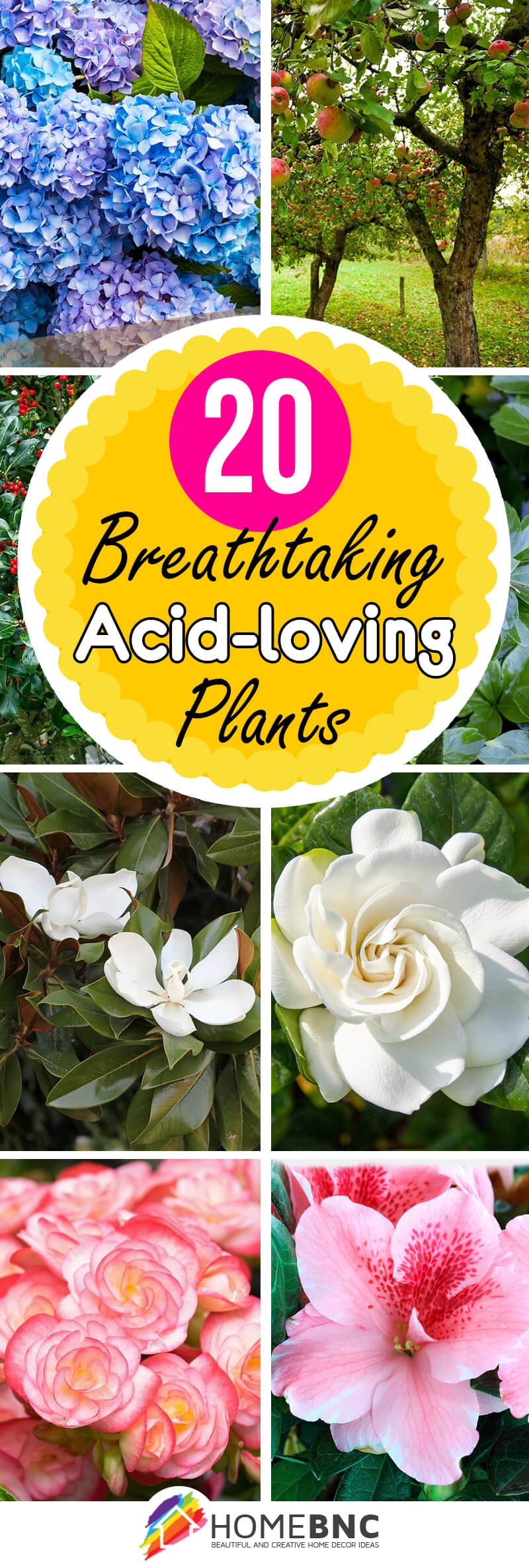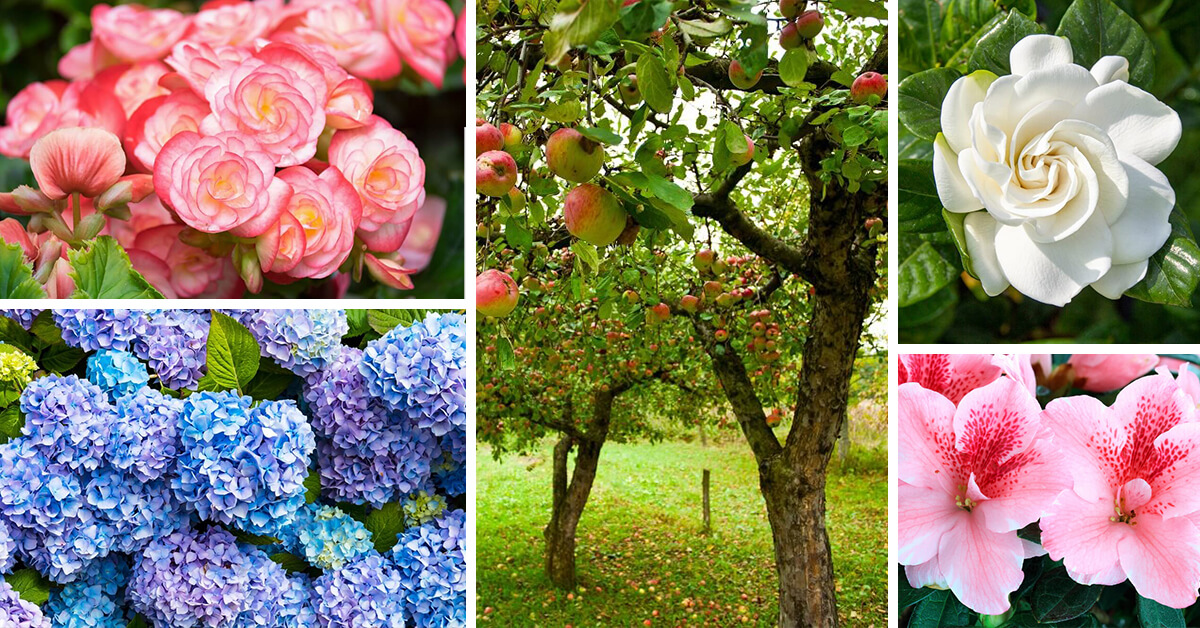If you have a garden with acidic soil, you may make the mistake of believing that your soil’s low pH will make it difficult to find interesting and attractive plants to grow. However, the selection of plants that grow well in acidic soil is surprisingly large. These acid-loving plants come in many forms, including trees, shrubs, perennials, and annuals. What that means is that there is plenty of plant variety available to those who have acidic soils. The list in this article will prove that point and introduce you to a wide range of plants that any gardener would be happy to grow.
Key Takeaways
You are about to learn a lot of information about the many different plants that made it onto our list of the best plants that grow in acidic soils. For each entry, we’ll mention a bit about what makes each plant special and worth growing, which will give you a good understanding of acid-loving plants as a whole. During that process, you are sure to notice a few key takeaways about this exciting plant group.
- Plants that grow in acidic soils come in many different forms, many of which are highly ornamental.
- Acid-loving plants can have a wide range of other growing requirements that are not always the same.
- For plants that grow better in acidic soils, your soil ph should be below 7.
- Some plants that grow well in acidic soils can grow in neutral or slightly alkaline soils as well.
- There are acid-tolerant plants in every plant category you can imagine.
20 Reliable Plants That Grow Well in Acidic Soil and Look Great Too
1. American Holly (Ilex opaca)
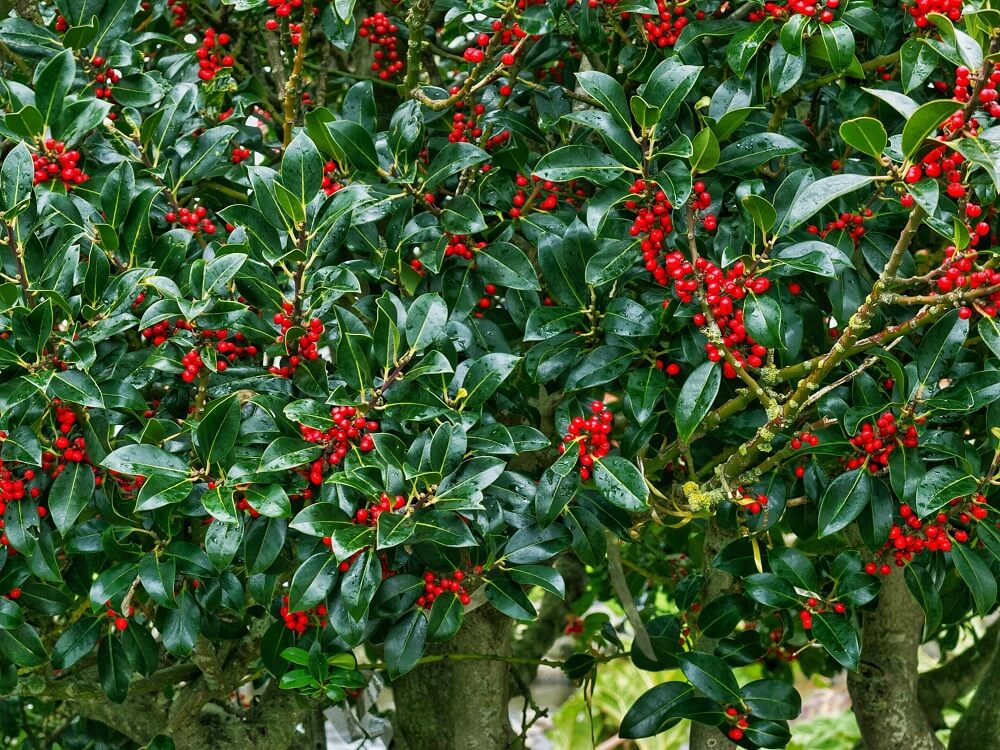
Although it is the perfect option for home décor during the winter holiday season, the American holly shrub is much more than a source of festive decoration. Instead, this shrub is an impressive broad-leaved evergreen that can act as a functional hedge for privacy and wind screening while also offering plenty of ornamental appeal. Much of that appeal comes from the fruits for which this plant is famous. Those fruits appear on female plants and are bright red and berry-like. However, if you want to enjoy those lovely fruits, you need to make sure that you plant both male and female American holly shrubs within close proximity to one another.
2. Apple Tree (Malus domestica)
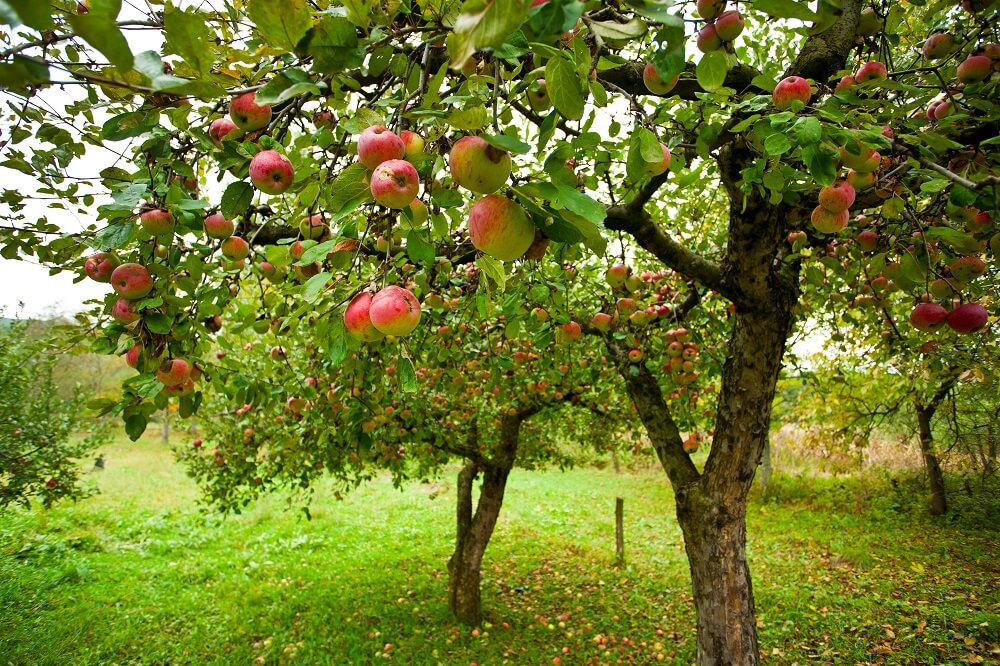
As this entry immediately proves, the group of plants that love acidic soil includes much more than ornamental garden options. That group also offers plenty of plants that provide an ample harvest. In this case, a plant that produces one of the most popular fruits in the world is also tolerant of acidic soils. With the right care, growing an apple tree in soils that have a relatively low pH level will result in a glorious harvest of apples. But don’t think this plant lacks ornamental value just because it produces fruits. Apple trees can be quite attractive, especially during their bloom period.
3. Azalea (Rhododendron)
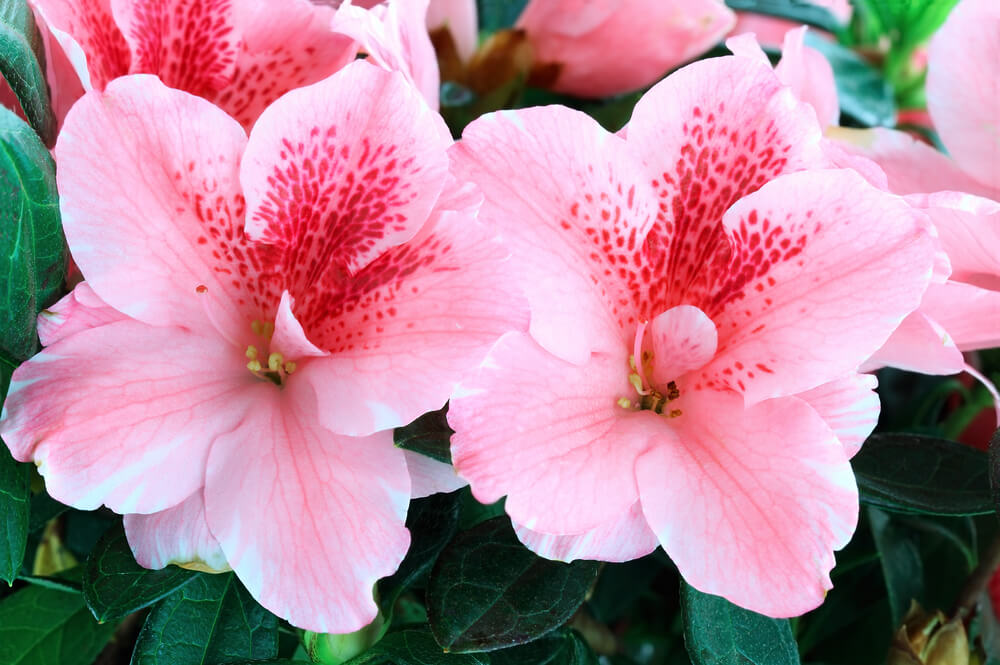
Azalea shrubs come in so many varieties that it is impossible to list them all here. However, you can rely on a few guarantees when planting one of these popular shrubs. First, it is fair to assume that most, if not all, azalea shrubs will thrive in areas that have acidic soils. You can also anticipate your azalea offering you large clusters of colorful flowers each spring. The color of those flowers will vary depending on the variety you own, but all are equally capable of adding visual intrigue to just about any garden. Also, along with being acid-tolerant, azaleas also have a good amount of shade tolerance as well.
4. Begonia (Begonia)
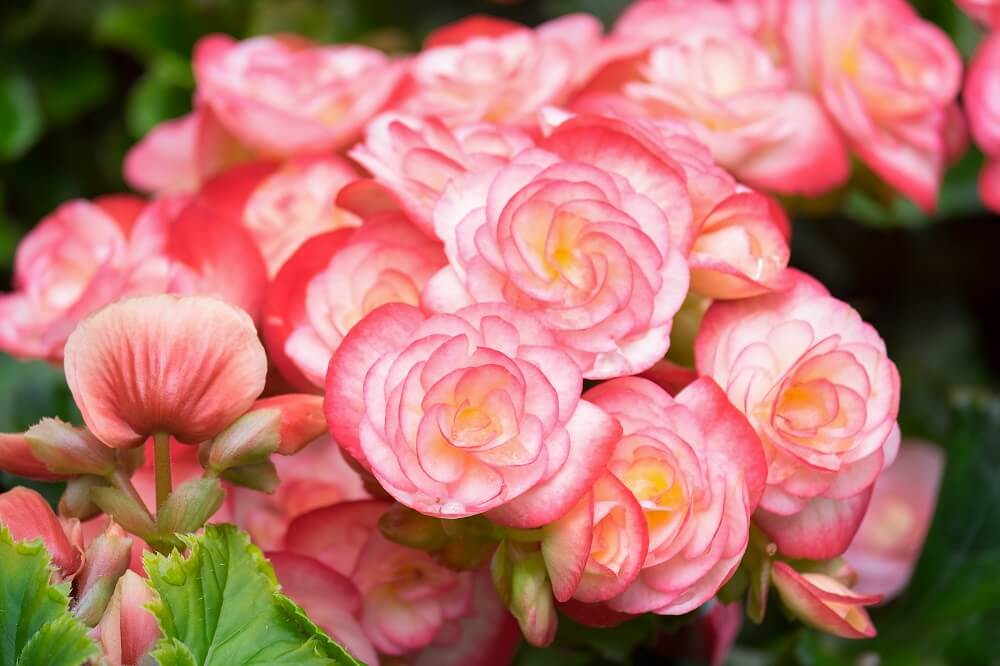
In most cases, gardeners grow begonias as an annual flowering species. But while these flowering annuals are popular, few people are aware that they are also tolerant of acidic soil conditions. In fact, the ideal soil pH range for a begonia plant falls below 6. During the growing season, begonias will provide you with plenty of blooms that typically range in color from light orange to light purple. These plants also have beautiful waxy leaves that are quite shiny and make a lovely backdrop for the flowers.
5. Bleeding Heart (Lamprocapnos spectabilis)
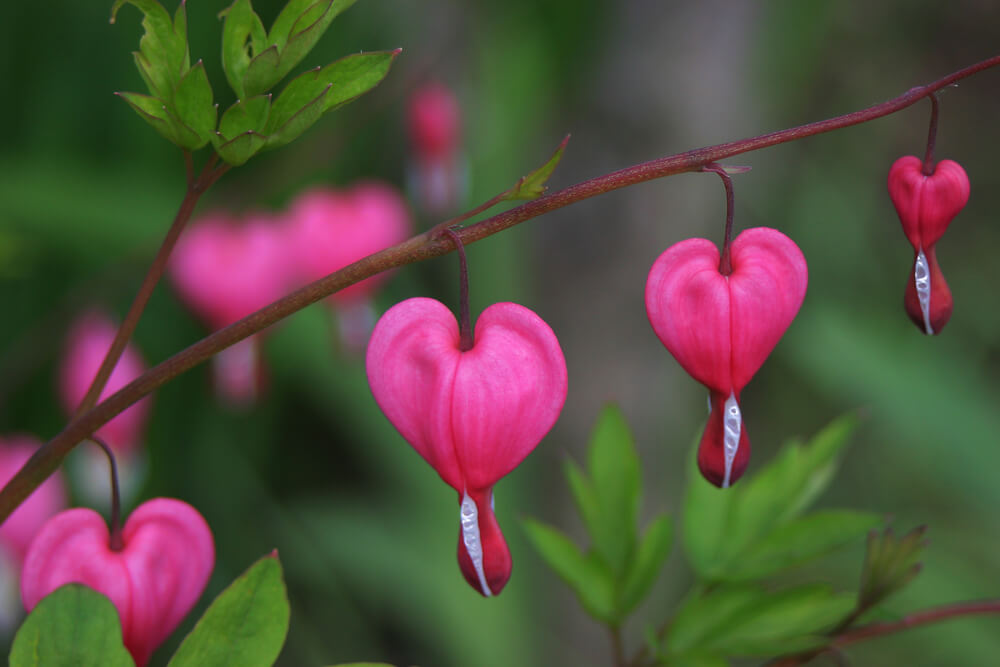
Here we have a perennial plant species that can solve two planting challenges at once. Not only does the bleeding heart plant tolerate acidic soils, but it is also a plant that can survive in partial and full shade settings. This allows the bleeding heart to grow in areas where few other species can survive, whether due to lack of light or low soil pH. Additionally, the bleeding heart plant has some of the most unique flowers that you can find. They dangle from the stems like small jewels and have a clear heart shape that will not leave you guessing about where this plant got its name.
6. Bottlebrush (Fothergilla gardenii)
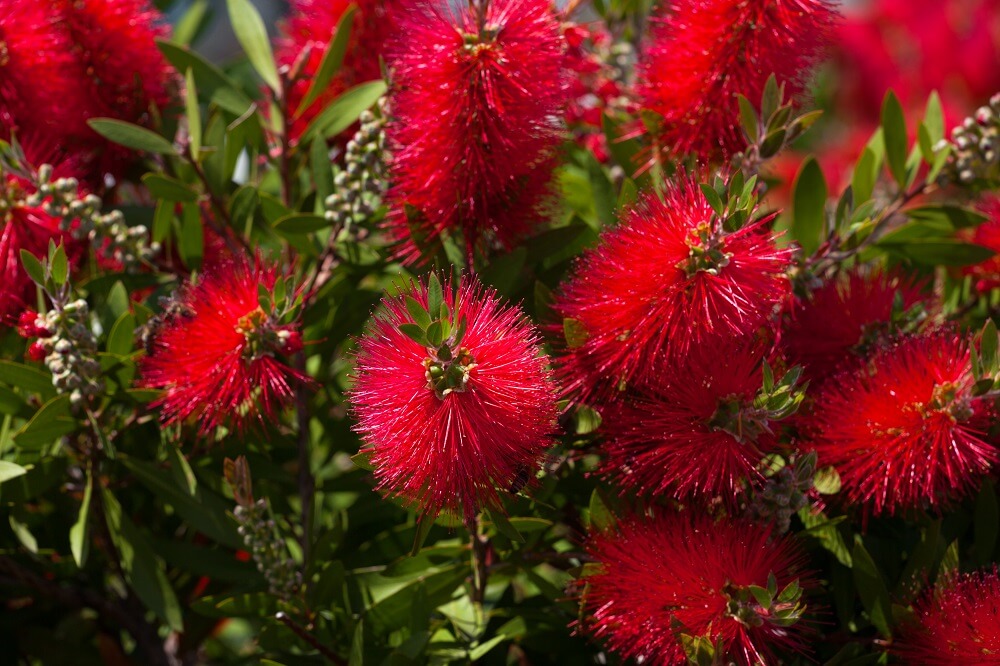
The bottlebrush shrub is a plant that is both irregular but overall compact in its growth habit. It reaches about 8 feet tall at its mature size and offers an incredible amount of texture thanks to its flowers and its leaves. Although it is deciduous, the foliage of the bottlebrush shrub is so thin that it appears somewhat needle-like. The flowers have a similar appearance as they consist of many small hair-like structures that grow out at all angles. The combination of those two unique bloom and foliage characteristics is what makes this plant such a lovely textural addition to the landscape.
7. Caladium (Caladium bicolor)
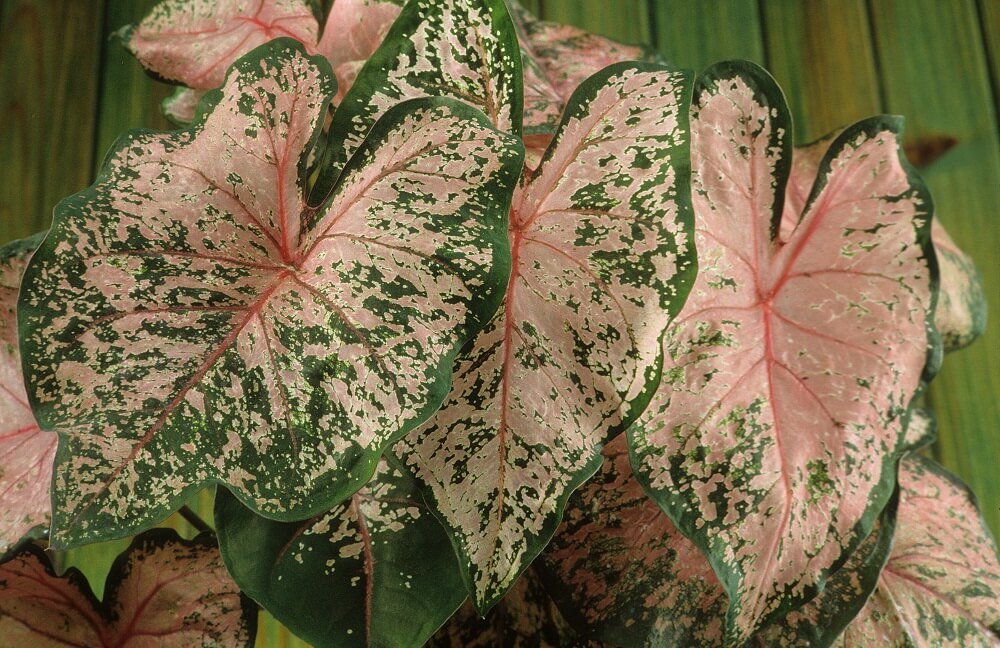
Caladium plants reveal the fact that flowers are not the only way in which a plant can provide color. This plant has large, elephant-ear-shaped leaves that are multi-colored. The variegation on these leaves is splotchy and irregular and includes shades such as pink, white, purple, and more. Fortunately, this amazing foliage plant is also a viable option for growing areas that have acidic soils. Caladium plants also require a warm environment, surviving in hardiness zones nine and warmer, which means that most people throughout the United States will need to grow this plant indoors, at least during the colder months of the year.
8. Camellia (Camellia japonica)
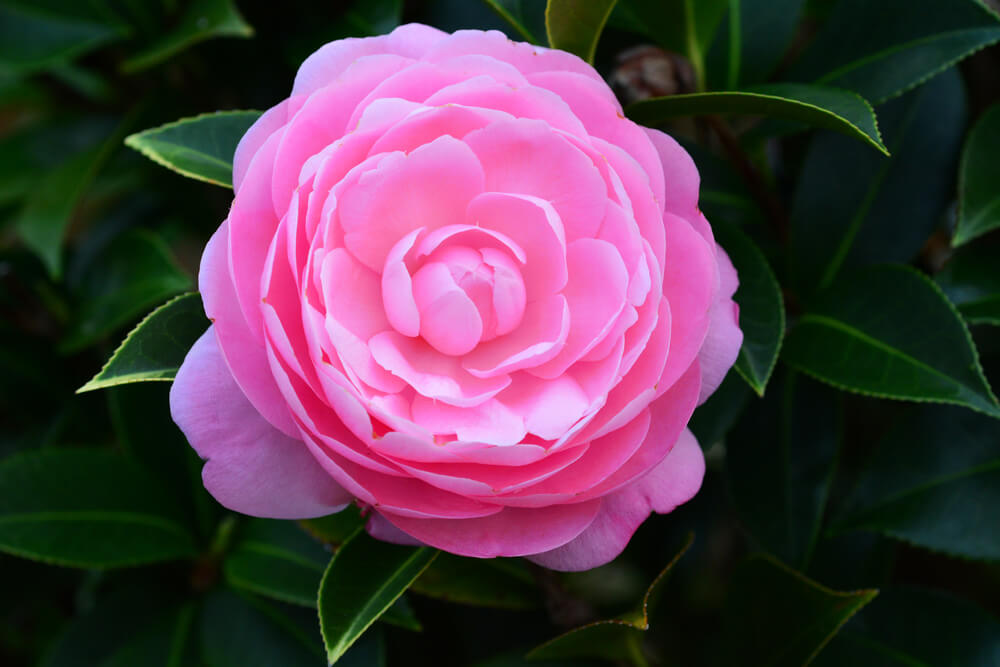
Overstating the beauty of camellia is a nearly impossible task. For example, the flowers alone are enough to make this plant a coveted prize within the gardening community. Each flower has many colorful petals that perfectly surround a center point. Beyond the flowers, camellia plants continue to impress, thanks to their glossy evergreen leaves and the elegant growth habits that they adopt as they develop. It is also worth noting that the camelia plant will grow best in areas that are acidic and provide plenty of shade throughout the day.
9. Creeping Dogwood (Cornus canadensis)
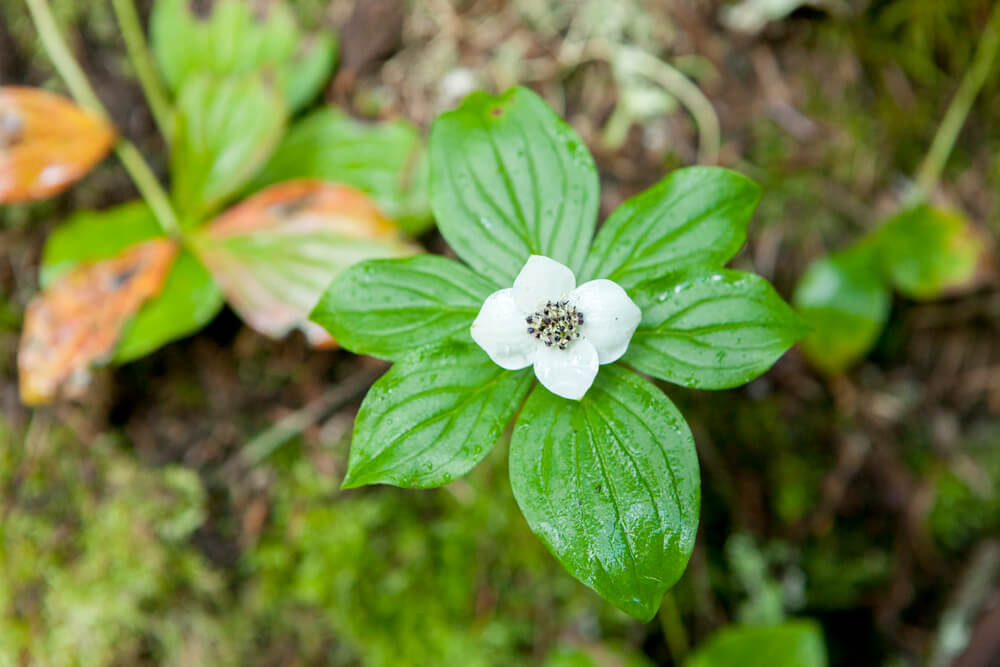
The creeping dogwood is often overshadowed, sometimes literally, by its relatives that take a tree form. However, although this plant is small, it is not one that you should overlook, especially if you are gardening in acidic soils. Creeping dogwoods are acid-lovers, and they have many of the same features that make the flowering dogwood tree so popular. This deciduous creeping groundcover plant has beautiful flowers with prominent white bracts and foliage that is a pleasant and vibrant green during the growing season.
10. Eastern White Pine (Pinus strobus)
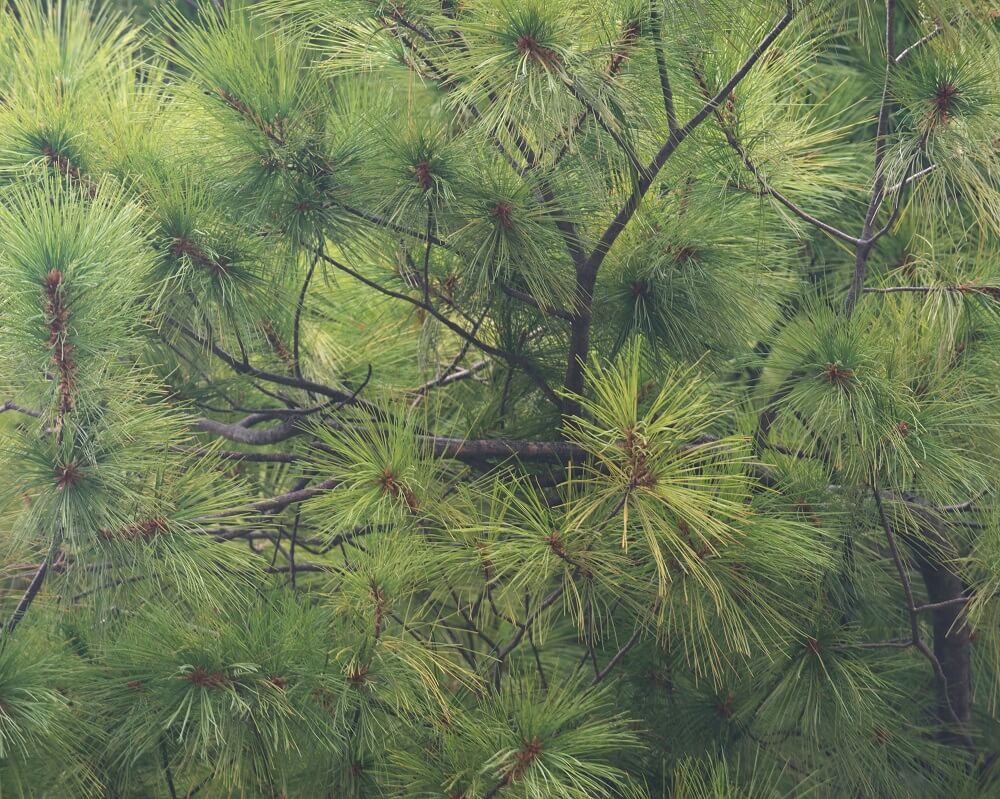
There is a common gardening myth that states that an eastern white pine will cause the soil it grows in to become more acidic when it drops its needles to the ground. That theory about pine tree needles has since been disproven. However, that has nothing to do with this plant’s true soil preferences, which do include relatively low pH levels. To some, the eastern white pine may not be at the top of their list of beautiful ornamental plants, but these trees are majestic, nonetheless. They typically grow to impressive heights with a single main trunk and an irregular canopy full of long pine needles that provide privacy when the tree is young and shade when the tree is mature.
11. Elderberry (Sambucus canadensis)

Here we have another acid-loving plant that can also bear some delicious fruits. The fruits that an elderberry shrub produces serve multiple purposes. Not only are these berries edible, but they are also born in beautiful dark clusters. Along with those benefits, there may be some convenient medicinal uses for elderberries as well. However, even if you don’t care about this plant’s berries, it will still provide you with some value. In spring, it blooms with small clusters of white flowers that are not only nice to look at but are also capable of attracting native pollinators too.
12. Gardenia (Gardenia jasminoides)
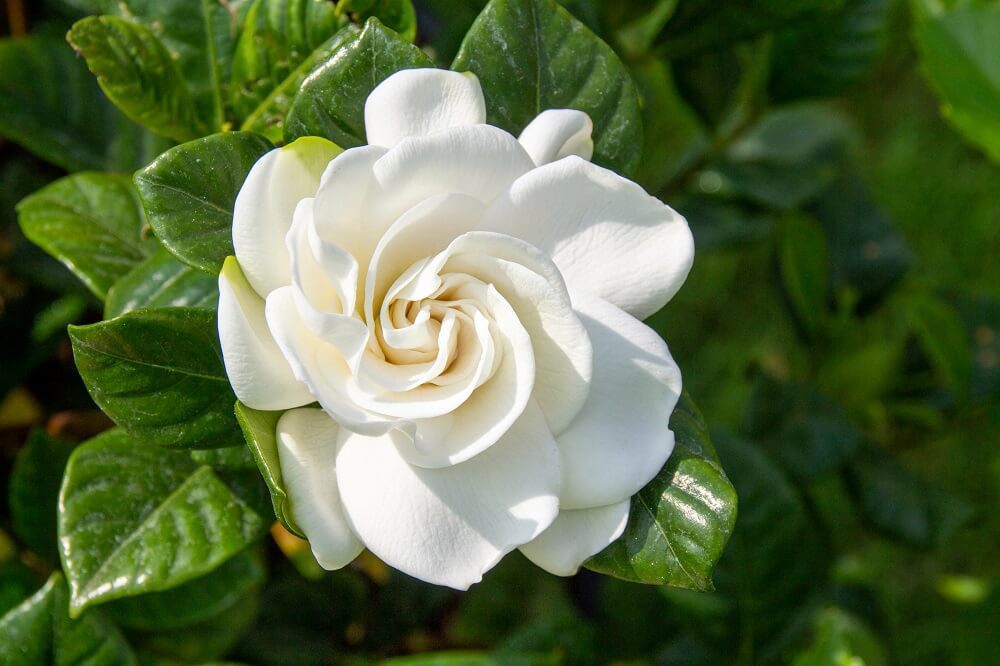
A gardenia provides flowers that you won’t soon forget. These flowers are incredibly showy, and they can appear in large numbers each season. However, the odds are that you’ll notice that your gardenia is in bloom even before you lay eyes on its white blooms. The reason for that is that the flowers of the gardenia shrub are incredibly fragrant, meaning that you’ll enjoy a lovely fragrance whether you are near them or not. Thankfully, gardenia shrubs can grow in acidic soils and throughout hardiness zones 7 through 11.
13. Highbush Blueberry (Vaccinium corymbosum)
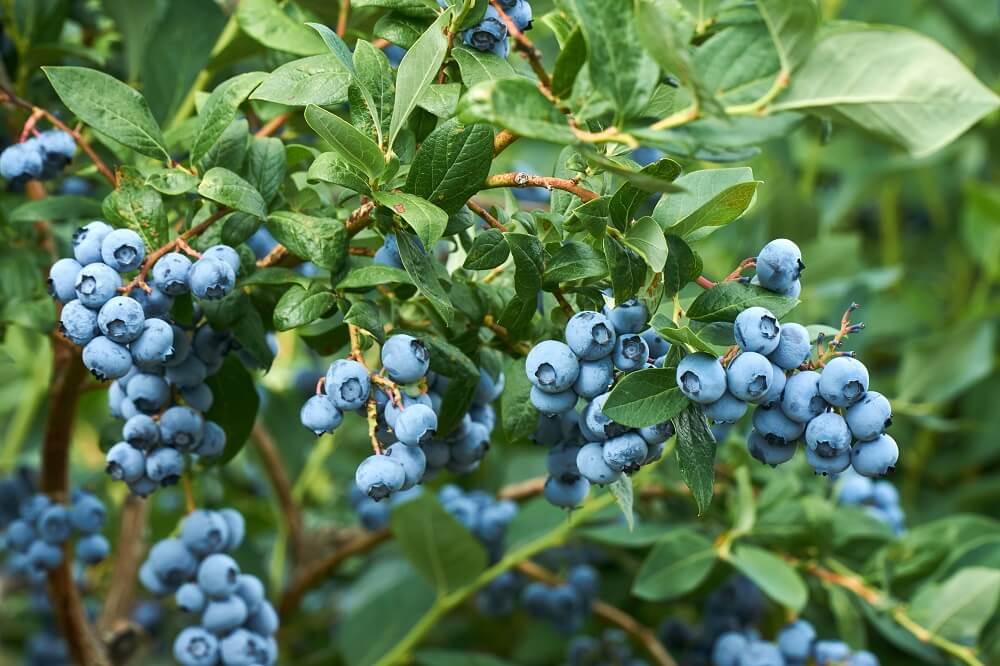
Whether you are a gardener or not, you likely enjoy the sweet and acidic flavor that a blueberry supplies. Interestingly enough, there is a similarity between that taste and the soil conditions that the highbush blueberry prefers. Mainly, the soil in which you grow this shrub should be acidic. It is also helpful to plant your highbush blueberry in a location that receives plenty of sunlight. With those conditions in place, you’ll be ready to collect a harvest of delicious blueberries during the summer months. Just make sure you get to them before any birds do.
14. Hydrangea (Hydrangea macrophylla)
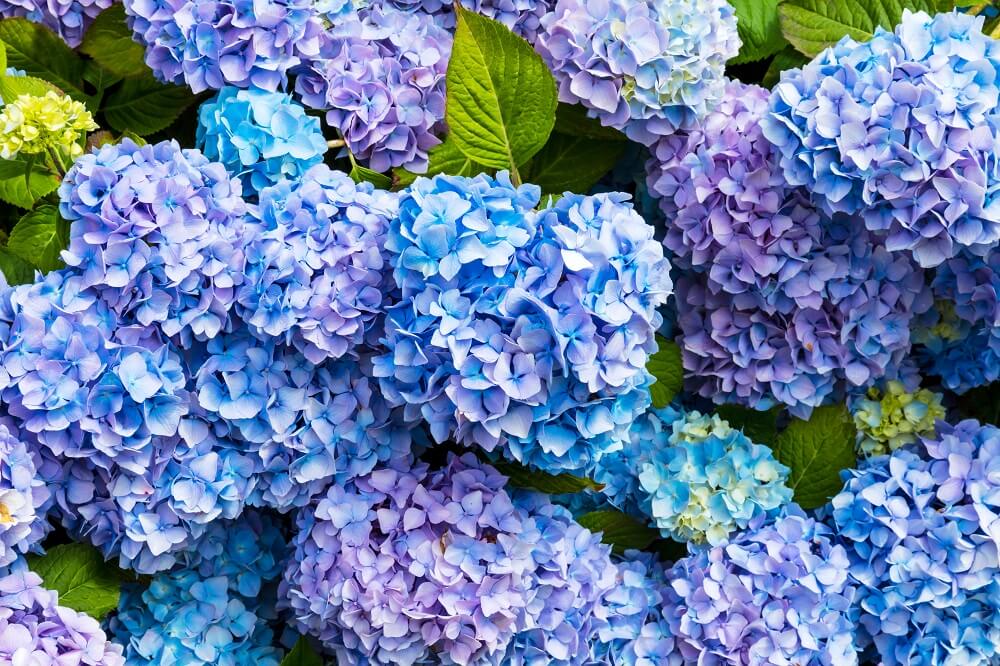
When selecting large flowering shrubs, the hydrangea is at the top of the list for many gardeners. These plants bloom with large clusters of tiny flowers. They also have large leaves that are quite pretty as well. One of the more unique aspects of this plant is that it can not only grow in acidic soils, but acidity can also alter the color of those incredible blooms. When growing in acidic soils, hydrangea shrub flowers are more likely to take on a rich blue color rather than a typical white.
15. Iris (Iris)
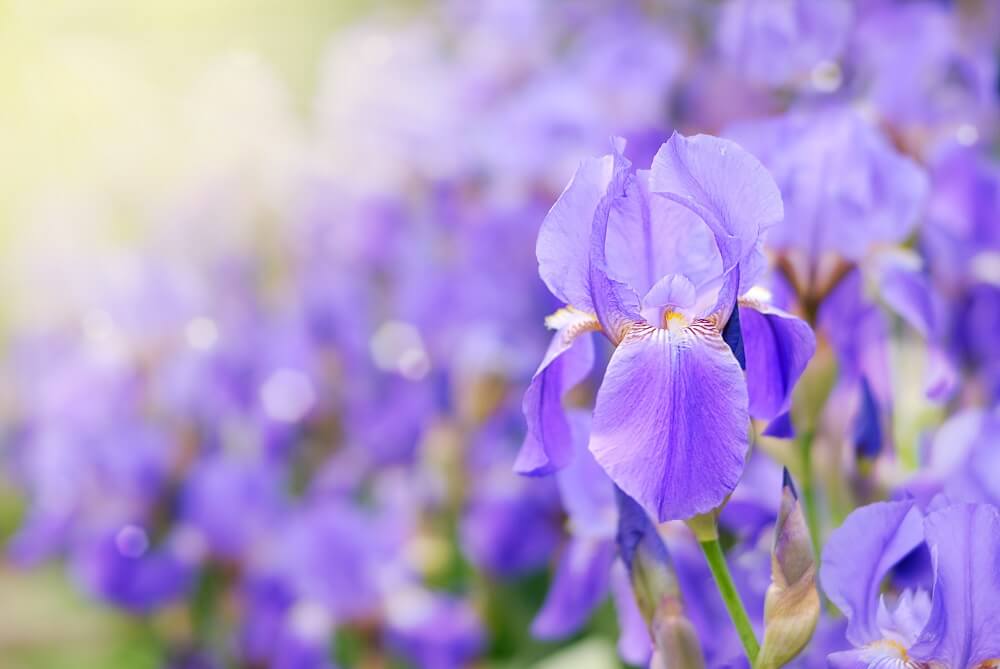
Irises are a group of popular perennial flowering plants that grow with tall talks atop which sit bold flowers that have a unique shape. These plants perform their best when they grow in slightly acidic soils in areas in which they can receive full sunlight. Without full sunlight, you cannot expect to witness the best bloom characteristics that these plants have to offer. Note that irises come in many different varieties, which means you should take your time to choose the one that has the color and growth traits you prefer.
16. Magnolia (Magnolia grandiflora)
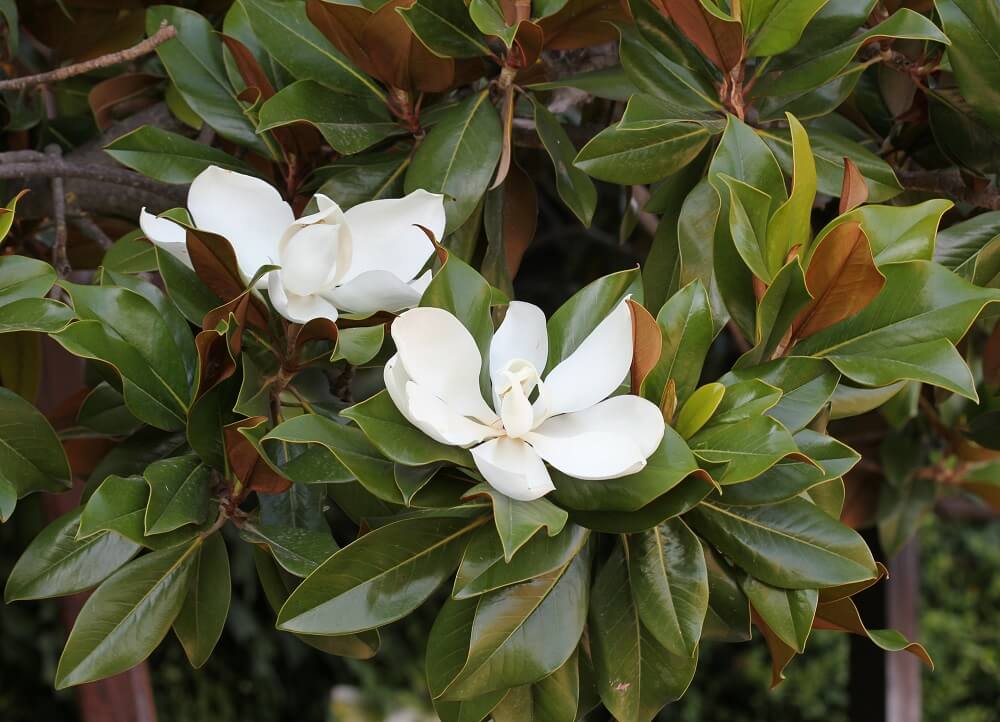
The Magnolia grandiflora, which goes by the common name magnolia or southern magnolia, is a classic addition to any landscape design. These trees thrive in hardiness zones 7 through 9, which makes them ideal for many parts of the southern United States. Magnolia trees bloom in May with beautiful flowers that have large petals. This variety also has glossy evergreen leaves that provide lush greenery throughout all months of the year. Magnolias are also somewhat tolerant of poor air quality as well as acidic soil conditions.
17. Oakleaf Hydrangea (Hydrangea quercifolia)
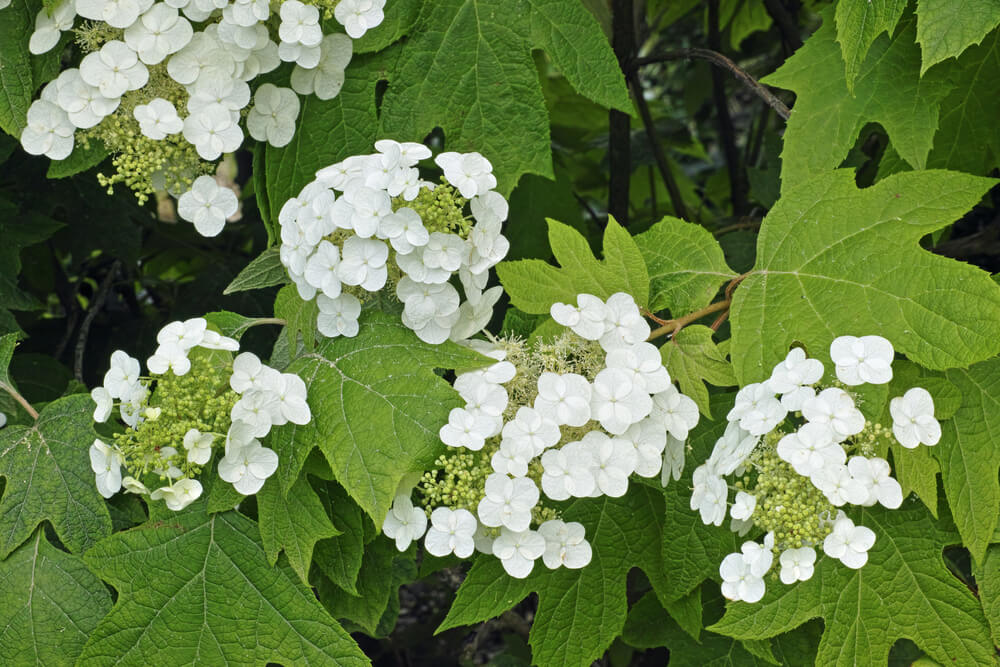
Compared to other hydrangea varieties, including the one we mentioned earlier on this list, the oakleaf hydrangea does not get the attention and credit that it deserves. This shrub is so versatile that it can grow in nearly any location. It survives almost any degree of daily sun exposure. It can also tolerate almost any soil type, including highly acidic soils. Beyond that functionality, an oakleaf hydrangea also has a unique appearance, which includes large flower clusters and deciduous leaves that have an oak leaf shape and turn deep red in the fall.
18. Pachysandra (Pachysandra terminalis)
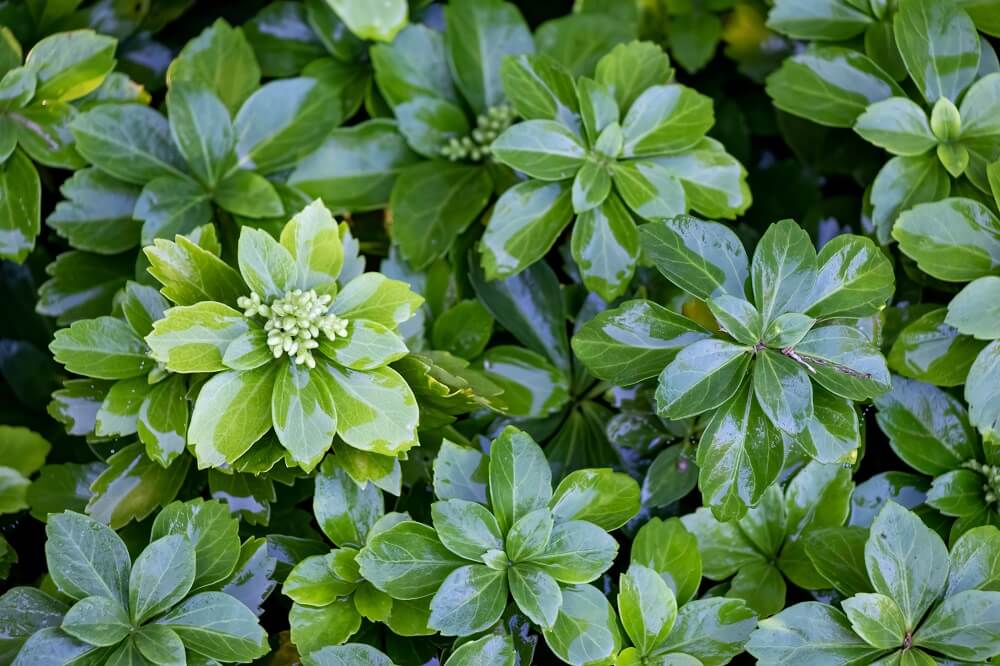
In many residential landscapes, the pachysandra plant is the go-to groundcover species. This plant has broad leaves and a dense spreading growth habit that allows it to completely cover the ground wherever it grows. In fact, the spreading nature and resilience of pachysandra can make it difficult to contain, as it will spread relatively quickly when it finds the conditions it likes. Included among those growing preferences is a tendency to adapt better to areas that include acidic soils.
19. Rosebay Rhododendron (Rhododendron maximum)
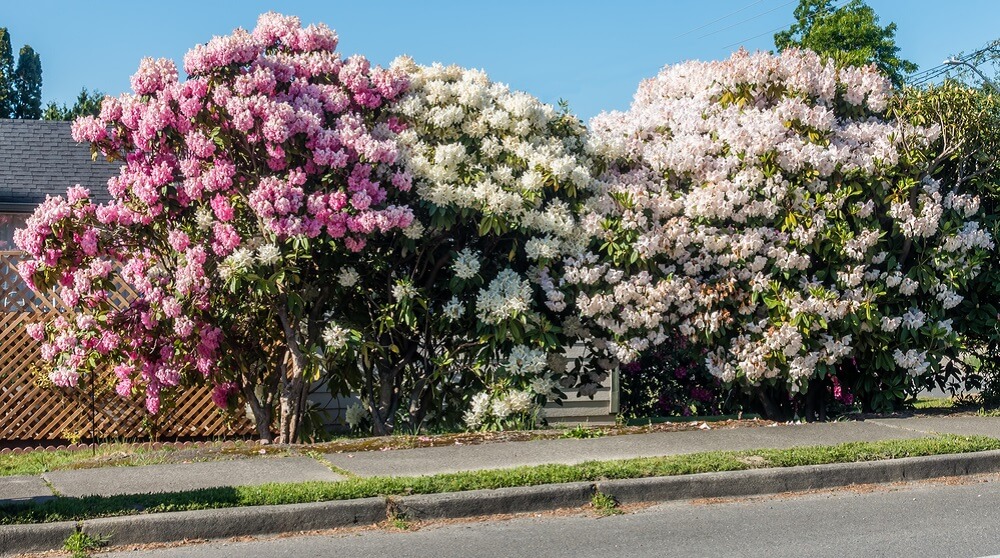
As is true of azaleas, which come from the same genus, rhododendron shrubs come in many different varieties. Among all those varieties, the largest and most significant of all is the rosebay rhododendron. This massive shrub has broad evergreen leaves and develops clusters of white flowers. When it finds a preferable growing location, it is common for a rosebay rhododendron to multiply and form colonies that are both large and dense. In most cases, the ideal growing conditions for a rosebay rhododendron will include acidic soil and a good amount of shade as well.
20. Trillium (Trillium)
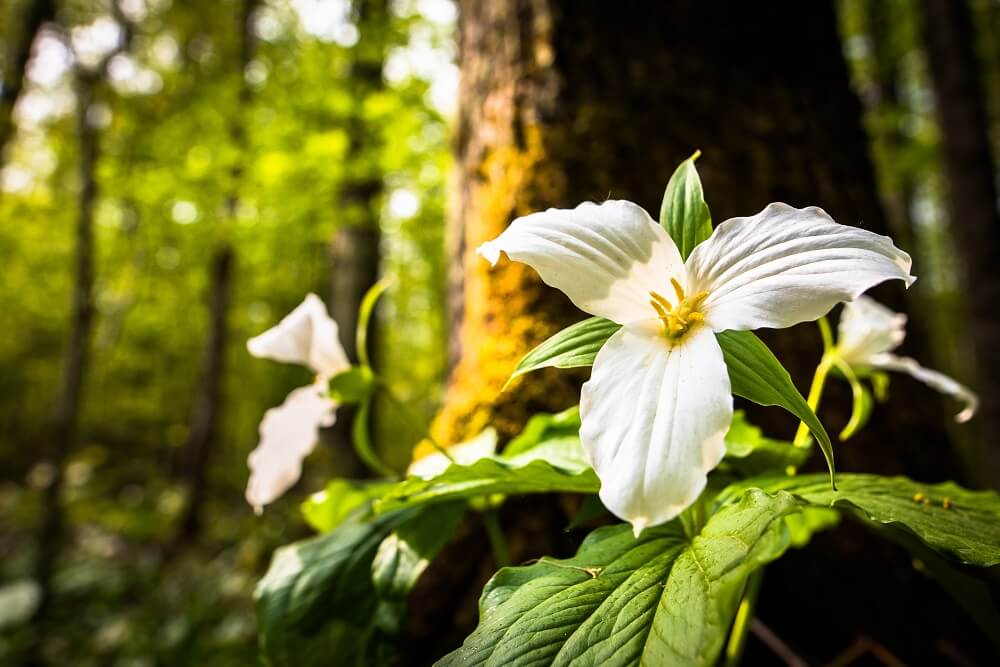
Our final entry on our list of plants that grow well in acidic soil is the trillium plant. This species thrives in woodland settings where there is filtered light from a tall canopy, moist soils, and a relatively high amount of soil acidity. If you have a garden location that mimics those natural features, then trillium is certainly a plant you should grow. The most prominent feature of this small woodland plant is its flowers, which have three distinct petals that can be either white or red. Those flowers stand just above some triangular leaves that also appear in sets of three.
If you want to become an expert on plants that grow well in acidic soil, then reading the plant options above is not enough. While our list has provided plenty of useful information about this topic, there is still much more to learn. Read on to get a few answers to some of the most frequently asked questions about plants that tolerate and love soils that are acidic.
[wp-faq-schema title=”Frequently Asked Questions About Plants that Grow Well in Acidic Soil” accordion=1]20 Diverse Plants That Grow Well in Acidic Soil and Come in Many Forms
The group of plants that grow well in acidic soils is not only highly varied. It is also home to many of the most popular plants in the gardening world. Based on that fact, you should not be at all concerned if you find that the soil on your property is more acidic than most. All it means is that you’ll need to narrow your selection down to plants that love acidic conditions. As our list shows, there are plenty of acid-loving plants, interesting flowers, foliage, and growth habits that you can start growing in your garden whenever you like.
